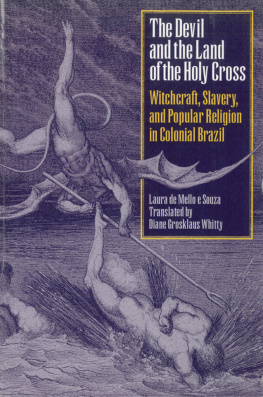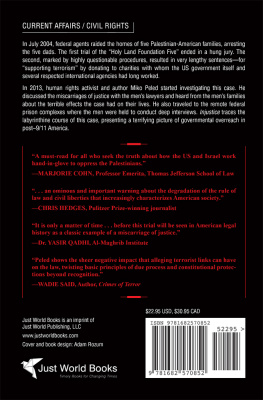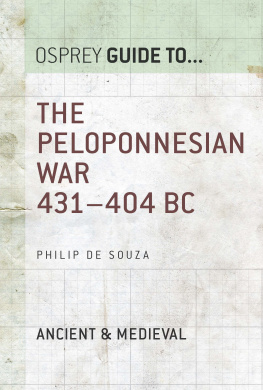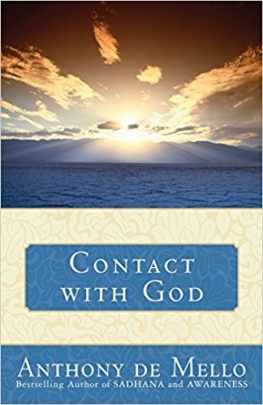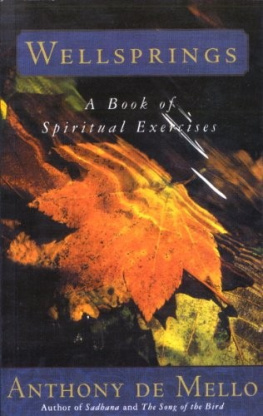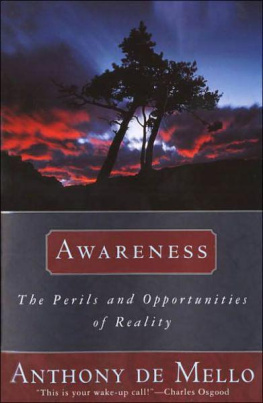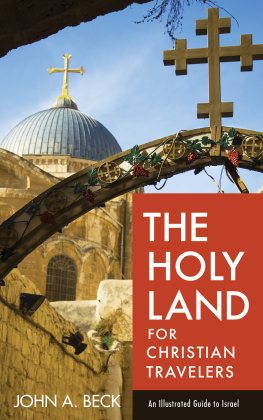Laura de Mello e Souza - The Devil and the Land of the Holy Cross
Here you can read online Laura de Mello e Souza - The Devil and the Land of the Holy Cross full text of the book (entire story) in english for free. Download pdf and epub, get meaning, cover and reviews about this ebook. publisher: University of Texas Press, genre: Religion. Description of the work, (preface) as well as reviews are available. Best literature library LitArk.com created for fans of good reading and offers a wide selection of genres:
Romance novel
Science fiction
Adventure
Detective
Science
History
Home and family
Prose
Art
Politics
Computer
Non-fiction
Religion
Business
Children
Humor
Choose a favorite category and find really read worthwhile books. Enjoy immersion in the world of imagination, feel the emotions of the characters or learn something new for yourself, make an fascinating discovery.
- Book:The Devil and the Land of the Holy Cross
- Author:
- Publisher:University of Texas Press
- Genre:
- Rating:3 / 5
- Favourites:Add to favourites
- Your mark:
- 60
- 1
- 2
- 3
- 4
- 5
The Devil and the Land of the Holy Cross: summary, description and annotation
We offer to read an annotation, description, summary or preface (depends on what the author of the book "The Devil and the Land of the Holy Cross" wrote himself). If you haven't found the necessary information about the book — write in the comments, we will try to find it.
The Devil and the Land of the Holy Cross — read online for free the complete book (whole text) full work
Below is the text of the book, divided by pages. System saving the place of the last page read, allows you to conveniently read the book "The Devil and the Land of the Holy Cross" online for free, without having to search again every time where you left off. Put a bookmark, and you can go to the page where you finished reading at any time.
Font size:
Interval:
Bookmark:
The Devil and the Land of the Holy Cross: Witchcraft, Slavery, and Popular Religion in Colonial Brazil
 LLILAS Translations from Latin America Series
LLILAS Translations from Latin America Series
The Devil and the Land of the Holy Cross: Witchcraft, Slavery, and Popular Religion in Colonial Brazil
Laura de Mello e Souza
Translated from the Portuguese by Diane Grosklaus Whitty
 University of Texas Press, Austin
University of Texas Press, Austin
Teresa Lozano Long Institute of Latin American Studies
This translation was made possible in part by a subsidy from the Vitae Foundation, So Paulo, Brazil.
Originally published in 1986 as O diabo e a terra de Santa Cruz: Feitiaria e religiosidade popular no Brasil colonial. So Paulo: Companhia Das Letras / Editora Schwarcz Ltda. Copyright 1986, Laura de Mello e Souza.
Translation copyright 2003 by the University of Texas Press
All rights reserved
Printed in the United States of America
First University of Texas Press Edition, 2003
Requests for permission to reproduce material from this work should be sent to Permissions, University of Texas Press, P.O. Box 7819, Austin, Texas 78713-7819
Library of Congress Cataloging-in-Publication Data
Souza, Laura de Mello e.
[Diabo e a Terra de Santa Cruz. English]
The Devil and the land of the holy cross : witchcraft, slavery, and popular religion in colonial Brazil / Laura de Mello e Souza ; translated from the Portuguese by Diane Grosklaus Whitty.-- 1st University of Texas Press ed.
p. cm. (LLILAS Translations from Latin America Series)
Includes bibliographical references and index.
ISBN 0-292-70228-0 (cloth : alk. paper) ISBN 0-292-70236-1 (pbk. : alk. paper)
1. WitchcraftBrazilHistory16th century. 2. WitchcraftBrazilHistory17th century. 3. WitchcraftBrazilHistory18th century. 4. BrazilReligious life and customs. I. Title. II. Series.
BF1584.B7S6813 2003
133.40981dc22
2003059904
ISBN 978-0-292-74947-4 (e-book)
ISBN 978-0-292-78751-3 (individual e-book)
For my parents and for Maurcio
The day that the captain-major Pedro lvares Cabral raised the cross... was the third of May, when we celebrate the creation of the Holy Cross on which Christ Our Redeemer died for us, and for this reason he named the land that he had discovered Santa Cruz, and by this name it was known for many years. However, inasmuch as the devil, with the sign of the cross, lost all dominion that he had over men, and feared losing as well the great share that he had over those of this land, he endeavored that the first name be forgotten and the name of Brazil remain, because of a wood so called, fiery red in color, with which they dye cloths, rather than that of the divine wood, which gave color and virtue to all the sacraments of the Church.
Friar Vicente do Salvador, Histria do Brasil (1627)
Preface to the English Edition
Published now for the first time in English, this book was originally written in 1985 as my dissertation, for which I received a doctorate in history from the Universidade de So Paulo in May 1986. The first Brazilian edition came out in December 1986; although the book has been reprinted seven times to date, its content has never been altered. It can thus be said that in 2003 The Devil and the Land of the Holy Cross enters its eighteenth year of existence true to its original conceptualization.
I conceived this book at a moment when works addressing sorcery and related phenomena were much fewer than they are today and thoughts on the topic were much less sophisticated. Three studies were then regarded as notable classics: Robert Mandrous Magistrats et sorciers en France au XVII e sicle (1968), Carlo Ginzburgs I Benandanti (1966; tr. The Night Battles, 1983), and Keith Thomass Religion and the Decline of Magic (1980). Remarkable progress has been made since then in studies on sorcery and magical practices. Two of the most important books devoted to the topic date from 1989 and 1997: Storia notturna (1989; tr. Ecstasies: Deciphering the Witches Sabbath, 1991) by Carlo Ginzburg and Thinking with the Devil by Stuart Clark (1997). The topic has been debated at a number of international conferences, in Copenhagen (1987), Budapest (1988), Saint-Cloud, France (1992), and Budapest once again (1999). Published proceedings provide an idea of the vigor of current scholarship and the interest elicited by the topic. Further evidence of recent attention to the theme was Brian Levacks extensive collection of major writings of the past few decades: Articles on Witchcraft, Magic and Demonology: A Twelve-Volume Anthology of Scholarly Articles (1992).
This same interest has been expressed with ever greater attention to specific contexts, pointing up regional singularities in what are now England, France, Germany, and Portugal. Examples include Witches and Neighbours (1996) by Robin Briggs; Sorcires, justice et socit aux 16 e et 17 e sicles (1987) by Robert Muchembled; Witchcraft Persecutions in Bavaria (English tr. 1997 [Hexenverfolgung in Bayern, 1987]) by Wolfgang Behringer; O imaginrio da magia (1987) by Francisco Bethencourt; and Bruxaria e superstio num pas sem caa s bruxas (1997) by Jos Pedro de Mattos Paiva. Meanwhile, one of the most thought-provoking books ever written on sorcery appeared in the United States in 1982: Entertaining Satan by John Putnam Demos, which investigated witchcraft in New England. Demos excluded the Salem trials, which had been analyzed from various angles since the publication of Paul Boyer and Stephen Nissenbaums classic Salem Possessed (1974); although this work had already come out before I finished my research, I only learned of it after 1986.
In their approaches to witchcraft and sorcery, all of the aforementioned studies fit the European mold, including an identification, on the one hand, with the doctrine of demonology and, on the other, with popular practices that tend to involve demonic intervention or collective rituals (the witches sabbat). But a large volume of scholarship also focuses on the magical and religious practices of non-European peoples, particularly those living in the Americas, who were systematically demonized by mission work and by the Catholic Churchs repressive actions in general. In this field, considerable progress has come through vertical studies aimed at elucidating the nature of autochthonous practices and their surrounding thought systemsfor example, the work of Alfredo Lpez Austin, most especially The Human Body and Ideology (English tr., 1988 [Cuerpo humano e ideologa, 1980]), and that of Linda Schele, above all Maya Cosmos (1993), co-authored by David Freidel and Joy Parker.
I would also like to draw attention to another line of scholarship, concerned with relationships between distinct cultural universes and how these universes came to intermingle and fertilize each other. Relativizing and reworking such polemic concepts as syncretism, acculturation, transculturation, and cultural hybridity, this line of research is more horizontal than vertical, consonant with the belief that phenomena are better understood when studied in relationship than alone. In this regard, Serge Gruzinskis La colonisation de limaginaire (1988; tr. The Conquest of Mexico, 1993) is a landmark work in which the author launches the theory that Westernization is a kind of First-World-ization. It also introduces the concept of cultural hybridity, further developed in a number of later works. Among studies on relationships between the Meso-American and European cultural universes, two other noteworthy analyses should be mentioned: Inga Clendinnens magnificent
Next pageFont size:
Interval:
Bookmark:
Similar books «The Devil and the Land of the Holy Cross»
Look at similar books to The Devil and the Land of the Holy Cross. We have selected literature similar in name and meaning in the hope of providing readers with more options to find new, interesting, not yet read works.
Discussion, reviews of the book The Devil and the Land of the Holy Cross and just readers' own opinions. Leave your comments, write what you think about the work, its meaning or the main characters. Specify what exactly you liked and what you didn't like, and why you think so.

